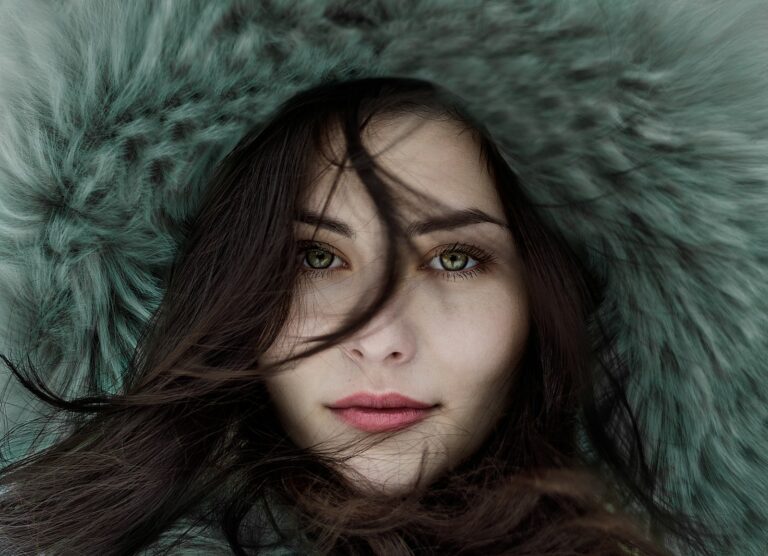Learn How to Say “Hello, Nice to Meet You” in Spanish
Imagine you’re strolling through a vibrant market in Spain, the air filled with the aroma of fresh paella and the lively chatter of locals. Suddenly, you lock eyes with someone who seems like they could become a new friend. But wait, how do you break the ice in Spanish? You don’t want to sound like a textbook, right?
Learning to say “Hola, encantado de conocerte” (Hello, nice to meet you) can be your golden ticket to making genuine connections. It’s not just about the words; it’s about the warmth and sincerity that comes with them. Picture the smile on their face when you greet them in their native language. Trust me, it’s worth it.
Essential Spanish Greetings

Breaking the ice in Spanish starts with a simple “hello.” Learning some essential greetings can make a world of difference. Let’s jump into how you can make those first impressions count.
“Hola” – The Universal Spanish Hello
When you want to greet someone in Spanish, Hola (OH-lah) is your go-to. It’s easy, familiar, and universally understood. Think of it as the Swiss Army knife of Spanish greetings. Just a simple Hola can open doors to deeper conversations and genuine connections.
Time-Specific Greetings
Matching your greeting to the time of day shows cultural awareness and respect. Here are the essential time-specific greetings:
“Buenos días” (Good Morning)
Start the day right with Buenos días (BWEH-nohs DEE-ahs). Whether you’re greeting a colleague at 9 AM or saying hi to your barista, Buenos días sets a positive, polite tone. It’s like the smile in your voice.
“Buenas tardes” (Good Afternoon)
Use Buenas tardes (BWEH-nahs TAR-dehs) for those mid-day interactions. Perfect for meetings, casual chats, or any afternoon encounter, this phrase bridges the gap between formal and friendly.
“Buenas noches” (Good Evening/Night)
Buenas noches (BWEH-nahs NOH-chehs) serves dual purposes: greeting someone in the evening and saying goodnight. It’s versatile, covering everything from dinner gatherings to bedtime farewells.
Formal vs. Informal Greetings
Knowing when to use formal vs. informal greetings helps you navigate social nuances in Spanish-speaking cultures.
Formal You | Informal You |
|---|---|
Usted (OO-stehd) | Tú (TOO) |
Use Usted in formal settings, like speaking with elders or professional contacts. Tú fits casual encounters, among friends or peers. For example, you’d say Hola, ¿cómo está usted? in a professional context but Hola, ¿cómo estás? with a friend.
Examples
Let’s put these greetings together:
These phrases blend your new vocabulary, making your Spanish sound natural and welcoming.
By mastering these essential greetings, you’re not just learning words but engaging meaningfully with Spanish speakers. So, start practicing, and watch how your simple Hola can lead to more extraordinary connections.
Expressing “Nice to Meet You” in Spanish

Starting a conversation in Spanish isn’t just about sounding polite. It’s about making that genuine connection. Let’s jump into the ways you can express “nice to meet you” and really resonate with Spanish speakers.
“Mucho gusto” – The Most Common Phrase
Mucho gusto is your go-to phrase. It’s versatile and works in nearly every situation. Whether you’re at a family gathering in Mexico or a business meeting in Spain, this phrase fits right in. Think of it as the Swiss Army knife of Spanish greetings. Do you remember your first day at a new job, nervously shaking hands and trying to make a good impression? Mucho gusto is like that firm, friendly handshake but in words.
“Encantado/a” – A More Formal Option
When formality is key, you can rely on Encantado or Encantada (depending on your gender). Picture yourself meeting your partner’s parents or attending a professional conference. This phrase shows respect and a touch of elegance. Men will use Encantado; women will use Encantada. It’s classy and fitting for those important first impressions.
“Es un placer conocerte/conocerlo” – A Polite Alternative
Sometimes, going a step further with politeness can leave a lasting impression. Es un placer conocerte (informal) or Es un placer conocerlo (formal) translates to “it’s a pleasure to meet you”. Imagine you’re meeting a client’s CEO, and you want to express that the meeting is indeed a privilege. This phrase perfectly communicates that sentiment in both formal and informal contexts. It’s like saying, “I truly value this opportunity to connect.”
Regional Variations
Spanish is a rich and diverse language with nuances that vary by region. For example, Mucho gusto might be more common in Latin America, while Encantado might be preferred in Spain. Understanding these subtleties showcases your cultural awareness. Think about the last time you adapted to a local dialect to blend in better. A small tweak, but it made a big impact, right?
Here’s a quick look at how these phrases can adapt depending on context:
Phrase | Usage Context | Region Preference |
|---|---|---|
Mucho gusto | General use, informal and formal | Latin America, widely understood globally |
Encantado/a | Formal situations, gendered | Spain, formal settings globally |
Es un placer conocerte/conocerlo | Both formal and informal, polite | Anywhere, when extra politeness is required |
Combining Hello and Nice to Meet You in Spanish

Mastering how to greet someone in Spanish warmly opens doors to rich conversations and connections. Here’s how combining “hello” and “nice to meet you” creates a great first impression.
“Hola, mucho gusto”
Hola, mucho gusto combines a simple “hello” with “nice to meet you,” making it versatile and informal. Friends, new acquaintances, and peers often use this phrase. Imagine running into someone at a cafe; saying Hola, mucho gusto breaks the ice effortlessly. It’s straightforward but friendly, setting a welcoming tone.
“Buenos días, encantado/a de conocerte”
A morning greeting shines with iBuenos días, encantado/a de conocerte. This formal introduction suits business environments or meetings with esteemed guests. Imagine arriving at a morning business meeting:
Together, they show respect and eagerness to meet.
“Buenas tardes, es un placer conocerlo”
For afternoon introductions, Buenas tardes, es un placer conocerlo works perfectly. It’s formal, elegant, and ideal for professional settings or formal gatherings.
Use this in scenarios like a formal dinner or an afternoon meeting to convey professionalism and politeness.
Tips for Smooth Introductions
Making a good first impression is key. Here are actionable tips:
Here’s a quick table for easy reference:
Time of Day | Informal Greeting | Formal Greeting |
|---|---|---|
Morning | Hola, mucho gusto | Buenos días, encantado/a de conocerte |
Afternoon | Hola, mucho gusto | Buenas tardes, es un placer conocerlo |
Adopting these expressions invites warmth and respect, making your Spanish greetings more enjoyable and effective.
Cultural Nuances in Spanish Greetings

Imagine stepping into a warm Spanish-speaking community; greetings do much more than break the ice—they build bridges. Though there are varied regional customs, a few universal practices stand out.
The Importance of Greetings in Spanish-Speaking Cultures
Greeting someone in Spanish isn’t just polite; it’s meaningful. Whether you’re saying “Hola“ or “Mucho gusto“, you’re showing respect and a willingness to connect. In these cultures, how you greet someone can often define your relationship. Ever wondered why greetings matter so much? It’s because they set the entire tone of future interactions—especially when meeting someone new or entering social circles.
Body Language and Etiquette
Plus to words, body language plays a role in Spanish greetings. Wondering how to strike the right balance between formal and casual? Let’s break it down.
Handshakes
When you first meet someone, whether a friend’s parent or a co-worker, a handshake can convey respect. A handshake in Spain or many Latin American countries is usually firm but brief, signaling sincerity without overstaying its welcome.
Cheek Kisses (Besos)
In social settings, don’t be surprised if you receive cheek kisses. Known as besos, two cheek kisses are often customary in Spain, while one suffices in many Latin American countries like Mexico or Argentina.
Regional Differences Across Spanish-Speaking Countries
Spanish-speaking cultures aren’t a monolith; regional customs influence how you greet someone. If you find yourself in Madrid, get ready for a double peck. Conversely, in Buenos Aires, a single cheek kiss is standard.
Region | Common Greeting Practice | Notes |
|---|---|---|
Spain | Two cheek kisses (besos) | Even among acquaintances |
Mexico | One cheek kiss | Handshakes in formal settings |
Argentina | One cheek kiss | A firm handshake occasionally |
Have you ever noticed how these small nuances make a significant impact? They reflect the region’s unique cultural ethos. Knowing these differences helps you navigate social interactions smoothly and show your respect for local customs.
Every greeting you master is a step toward deeper connections and more enriching experiences in any Spanish-speaking setting.
Practice Dialogues: Hello Nice to Meet You in Spanish

Mastering greetings helps you connect with Spanish speakers. Let’s explore common dialogues to say “hello, nice to meet you” in different contexts. Greet formally in a business setting or casually at social gatherings with these examples.
Formal Situations
Business Meetings
Formal greetings are essential in professional settings. They show respect and establish a positive tone for business relationships.
Example Dialogue:
English | Spanish |
|---|---|
Hello, nice to meet you. | Hola, mucho gusto. |
It’s a pleasure to meet you. | Es un placer conocerle. |
How are you? | ¿Cómo está? |
I’m fine, thank you. And you? | Estoy bien, gracias. ¿Y usted? |
In this dialogue, Hola, mucho gusto and Es un placer conocerle convey politeness. Use ¿Cómo está? for formal “How are you?” responses.
Academic Settings
In academic environments, greetings can be formal but slightly more relaxed compared to business meetings.
Example Dialogue:
English | Spanish |
|---|---|
Hello, I’m your new professor. Nice to meet you. | Hola, soy su nuevo profesor. Mucho gusto. |
Hello, nice to meet you too. | Hola, mucho gusto también. |
What’s your name? | ¿Cuál es su nombre? |
My name is… | Mi nombre es… |
Using Hola, soy su nuevo profesor sets a professional yet approachable tone. Follow up with ¿Cuál es su nombre? to learn the student’s name.
Informal Situations
Social Gatherings
When meeting people casually, your greetings can be relaxed and friendly.
Example Dialogue:
English | Spanish |
|---|---|
Hi, nice to meet you. | Hola, mucho gusto. |
Nice to meet you too. | Mucho gusto también. |
How’s it going? | ¿Cómo va? |
Great, thanks. How about you? | Genial, gracias. ¿Y tú? |
In a social setting, Hola, mucho gusto paired with ¿Cómo va? keeps the conversation light and engaging.
Meeting Friends of Friends
When introduced to friends of friends, keep it casual, but warm.
English | Spanish |
|---|---|
Hey, nice to meet you. | Hola, encantado/a. |
Nice to meet you, too. | Encantado/a también. |
What do you do? | ¿A qué te dedicas? |
I work in… | Trabajo en… |
Starting with Hola, encantado/a personalizes the greeting based on your gender (encantado for males, encantada for females). Follow up with ¿A qué te dedicas? to show interest in their occupation.
Direct practice dialogues familiarize you with various settings, making social interactions smoother. Immerse yourself in conversations and quickly feel more comfortable greeting Spanish speakers.
Common Mistakes to Avoid

When learning how to say “hello, nice to meet you” in Spanish, it’s important to avoid common pitfalls. Missteps can confuse listeners or even create awkward moments. Let’s break down the main areas to watch out for so you can make a great impression every time.
Pronunciation Errors in Greetings
Pronunciation plays a huge role in effective communication. Mistakes like misplacing accents or stressing the wrong syllables can change a word’s meaning. For example, saying “MU-cho GUS-to” instead of “MOO-cho GOO-sto” could lead to misunderstandings.
Here’s a quick guide to help:
Phrases | Correct Pronunciation |
|---|---|
Mucho gusto | MOO-cho GOO-sto |
Encantado | en-kah-tah-DOH |
Hola, mucho gusto | OH-lah MOO-cho GOO-sto |
Hola, encantado | OH-lah en-kah-tah-DOH |
Es un placer | ESS oon PLA-ser |
Mixing Formal and Informal Language
Using the right level of formality is crucial when greeting someone in Spanish. Mixing formal and informal language can unintentionally signal disrespect or excessive familiarity.
Imagine you’re meeting a new colleague versus an old friend’s cousin. Would you greet both the same way? Probably not. In Spanish, the distinction is equally important.
Inappropriate Body Language or Gestures
Body language can make or break your greeting. Using inappropriate gestures or body language can lead to discomfort or miss cultural cues. In Spain, for instance, it’s common to greet with a light handshake or a cheek kiss, depending on the relationship.
Inappropriate gestures to avoid:
Using the Wrong Greeting for the Time of Day
Greeting someone without considering the time of day can be a rookie mistake. Spanish greetings change depending on whether it’s morning, afternoon, or evening.
Here’s a quick reference:
Time of Day | Appropriate Greeting |
|---|---|
Morning (until noon) | Buenos días |
Afternoon (from noon to evening) | Buenas tardes |
Evening/Night | Buenas noches |
Using “Buenos días” at 5 PM won’t go unnoticed and can sound odd. Just like in English, timing is essential.
Focusing to these common mistakes, you’ll navigate Spanish greetings with more confidence and grace. After all, the goal is to leave a positive impression, so taking care with these details makes a world of difference.
Tips for Mastering Spanish Introductions

Mastering Spanish introductions elevates your language skills and creates meaningful connections. Here are practical tips to help you greet others with confidence.
Listen And Repeat With Native Speakers
Engaging with native speakers enhances your pronunciation and helps you grasp nuances. Consider joining a Spanish-speaking community or participating in local events. Mimicking phrases like Hola, mucho gusto and practicing Hola, encantado/a ensures authenticity in your speech. Hearing real-life conversations sharpens your listening skills and enables you to pick up regional accents.
Practice With Language Exchange Partners
Language exchange partners provide a relaxed environment to practice introductions. Finding a partner online lets you take turns speaking in English and Spanish, correcting each other’s mistakes. Try starting conversations with Hola, un gusto to make it more conversational. These exchanges not only improve your language but also offer cultural insights and build friendships.
Use Language Learning Apps For Pronunciation
Language learning apps like Duolingo or Babbel help practice pronunciation and offer structured lessons. These apps often include phrases like Hola, mucho gusto and Hola, un gusto, allowing you to practice consistently. With repetition and speech recognition features, apps help perfect your accent and ensure you’re understood clearly.
Immerse Yourself In Spanish Media
Watching Spanish movies, listening to Spanish music, and reading Spanish books immerses you in the language and culture. Choose content with dialogues featuring greetings to familiarize yourself with different contexts. Hearing phrases like Hola, mucho gusto in various settings reinforces learning and keeps the process enjoyable.
Using a combination of these methods ensures a balanced and engaging approach to learning Spanish introductions. Each tip provides a unique way to enhance your fluency and cultural understanding, helping you connect more authentically with Spanish speakers.
Conclusion: Confidently Saying Hello Nice to Meet You in Spanish
Mastering Spanish greetings is a fantastic way to start building your language skills and connect with Spanish speakers. By understanding cultural nuances and regional differences, you’ll be able to greet others more authentically.
Remember the practical tips we discussed: engage with native speakers, practice with language exchange partners, use language learning apps, and immerse yourself in Spanish media. These steps will help you improve your pronunciation and deepen your cultural understanding.
So go ahead and put what you’ve learned into practice. With a friendly “Hola” and a warm “Mucho gusto,” you’ll be making meaningful connections in no time!
Frequently Asked Questions
What is the meaning of Mucho Gusto?
“Mucho gusto” translates to “Nice to meet you” or “It is a pleasure to meet you” in English. It is used as a friendly greeting when meeting someone for the first time.
How do I respond to “Buenos Dias”?
You can respond with “Buenos días” right back or add “Hola” for a more friendly touch, saying, “Hola, buenos días” (Hello, good morning).
How do Spanish people greet strangers?
Spanish people usually say “Buenos días” (Good day), “Buenas tardes” (Good afternoon), or “Buenas noches” (Good evening/night), depending on the time of day. Casual greetings include “Hola” (Hello) and “¿Cómo estás?” (How are you).
How do you respectfully greet in Spanish?
Common respectful greetings include:
¡Hola! — Hello
Buenos días — Good morning
Buenas tardes — Good afternoon
Buenas noches — Good evening
¿Cómo está? — How are you? (Formal)
¿Cómo estás? — How are you? (Informal)
¿Cómo están? — How are you? (Plural)
¿Qué tal? — How’s it going?
How to respond to hola mucho gusto?
A common response to “mucho gusto” is “el gusto es mío” (the pleasure is mine) or simply “igualmente” (likewise) to reciprocate the sentiment.






